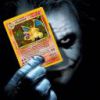 13
13One of the major confusions...sometimes they take the functional carbon as alpha (remember the Beta-Elimination during Dehydrohalogenation??),
n sometimes the carbon nxt 2 the functional carbon as alpha (as in alpha-beta unsaturation etc.)...
Even i'm confused here...
 1
1arrey.. sahi to hai.. alpha carbon is the carbon directly attached to functional group. Here fx group: OH . alpha H : R2 CH OH . Whats wrong in that?
 11
11no alpha carbon is carbon attached to carbon attached to func gr.
 1
1arre i think that's in the case of carboxlic acidis. the ans. given in the buk is correct with respect to alcohols
 39
39Its absolutely fine. Secondary alcohols give blue coloration in Victor-Meyer's test, and the alpha carbon is the carbon attached to the functional group here. The Greek numbering is a relative system. It depends relative to WHAT we are numbering the chain. Here it is relative to the -OH group.
 11
11Pritish what your saying is what writers like Morrison n Boyd say,,what i am saying,writer like Finar and Solomon follow..this is an everlasting confusion,,for this q is best to go for ans as 1.
 13
13Ohk..... something clicked at last......
The Alpha Carbon is the 1st Carbon directly attached to the Functional Group.
So if -OH is the func. group, then the 1st carbon will do the job.......
But when v have a compound like this- RCH2CH2COOH, the alpha corbon is the underlined one (Kyunki func. group is COOH & the CH2 carbon is the 1st carbon attached directly to it)
P.S. I now realise tht Ankur was saying the same thing, though i didn't get it at tht time... :p
 11
11ya it will be like that only then. [1]